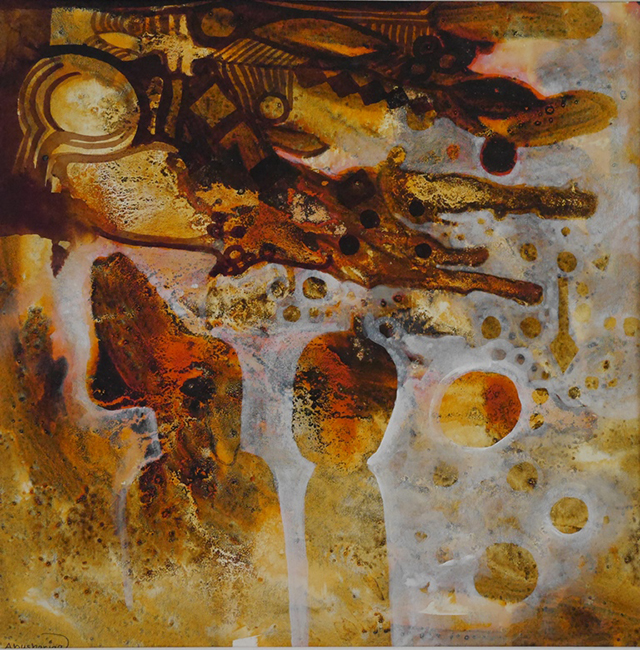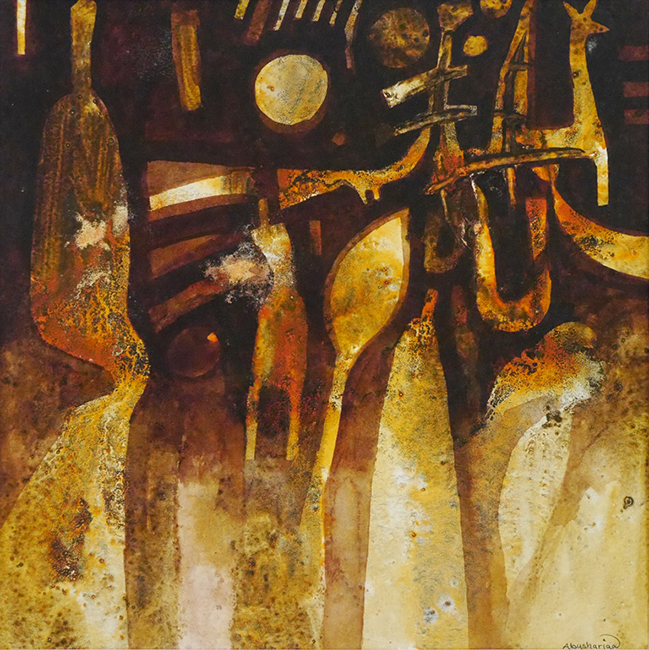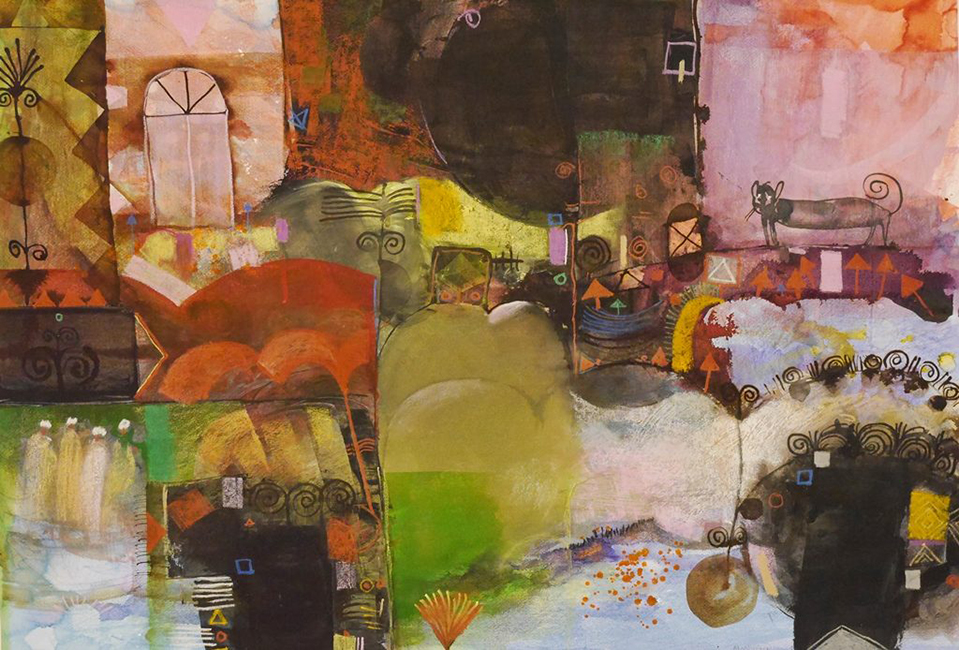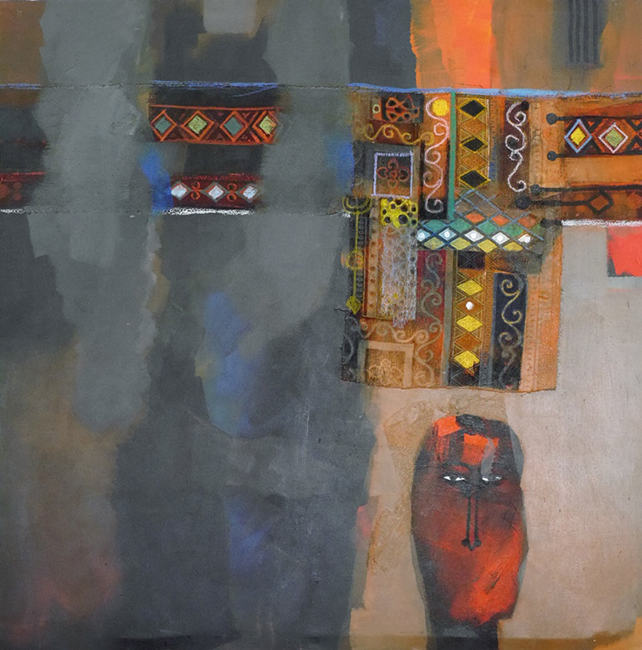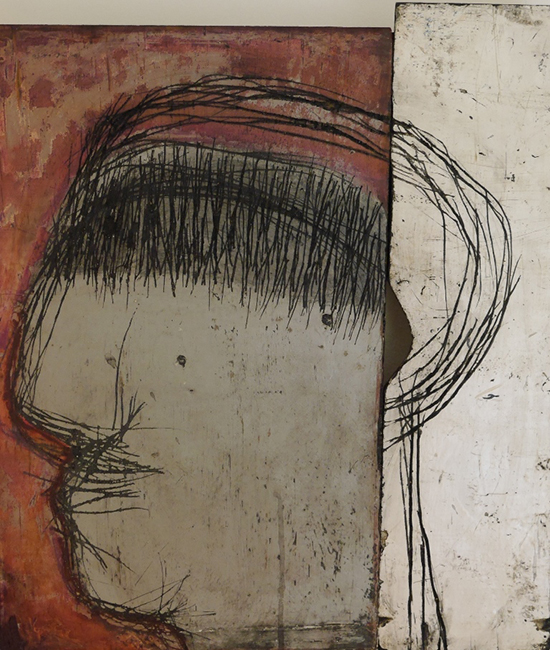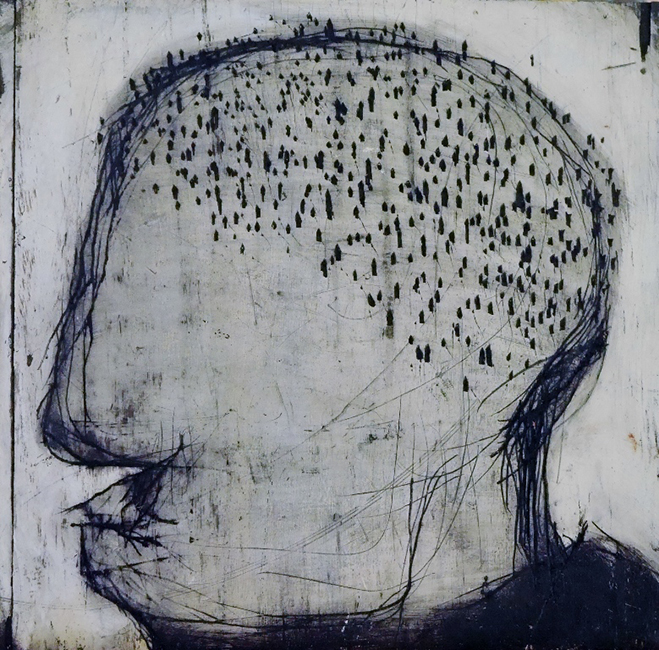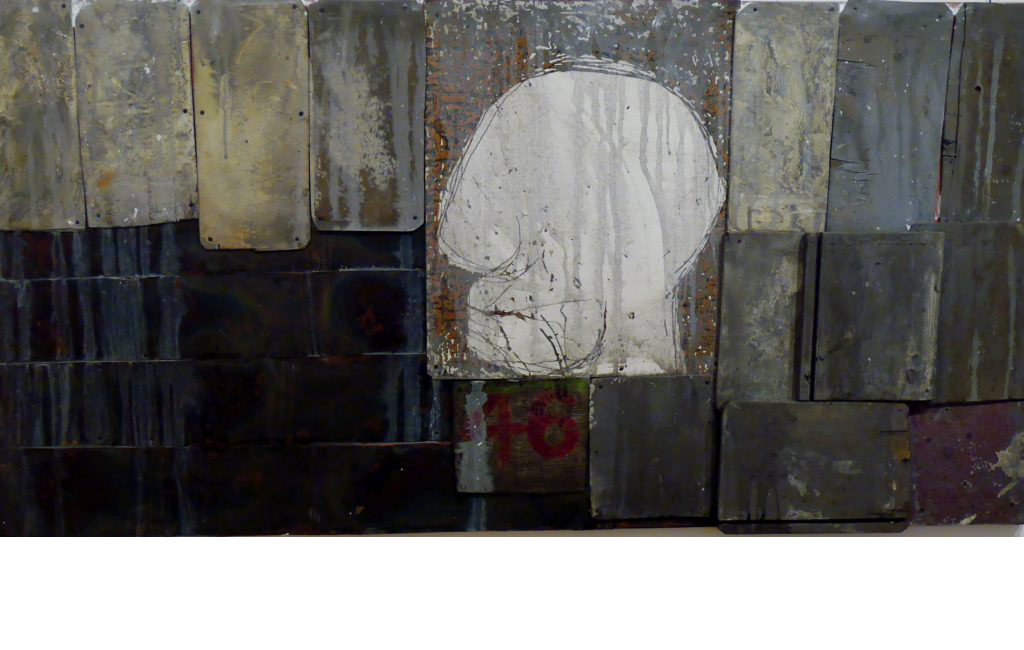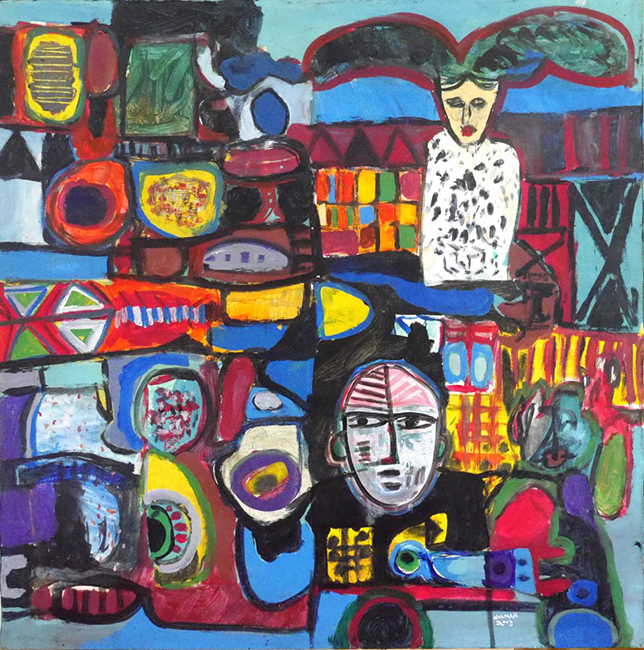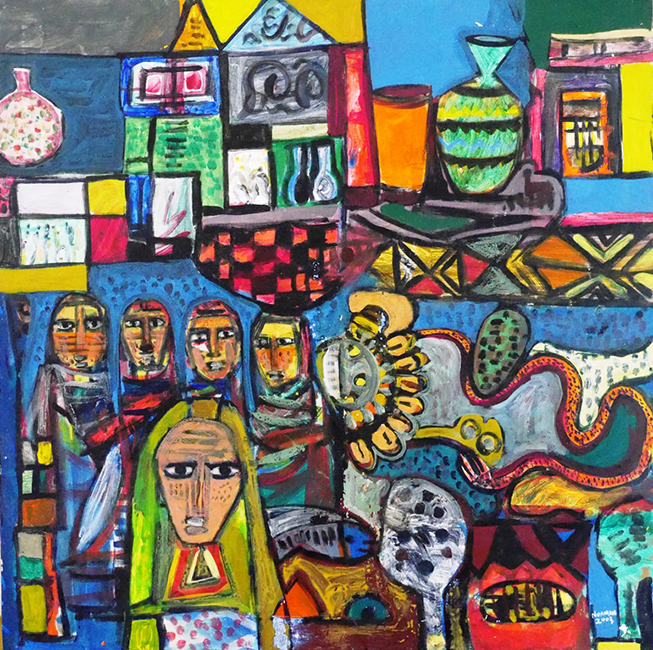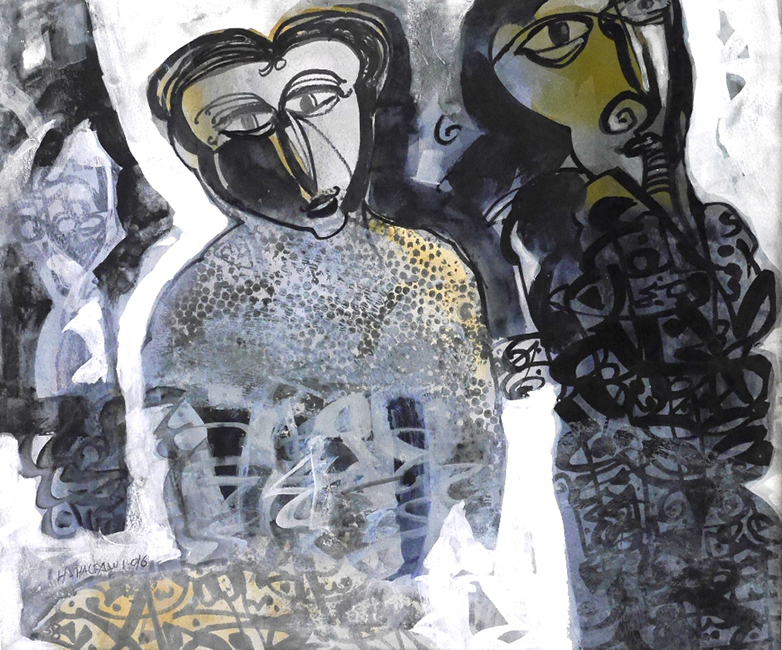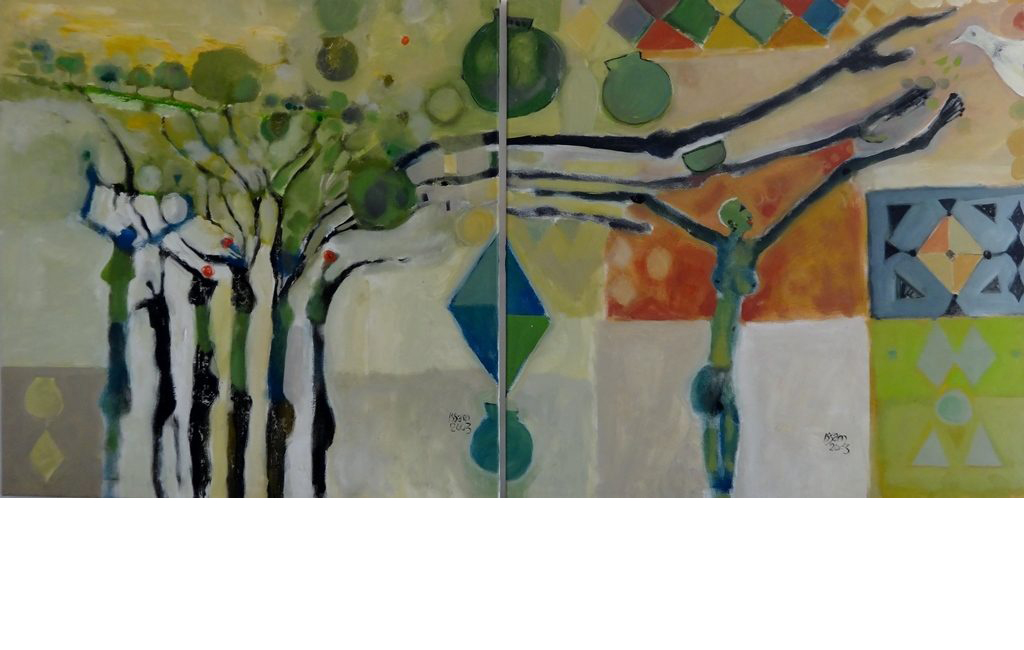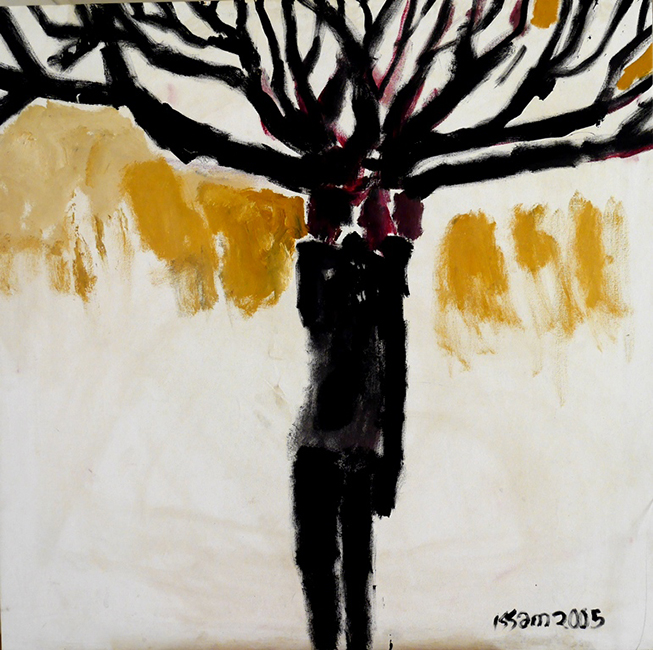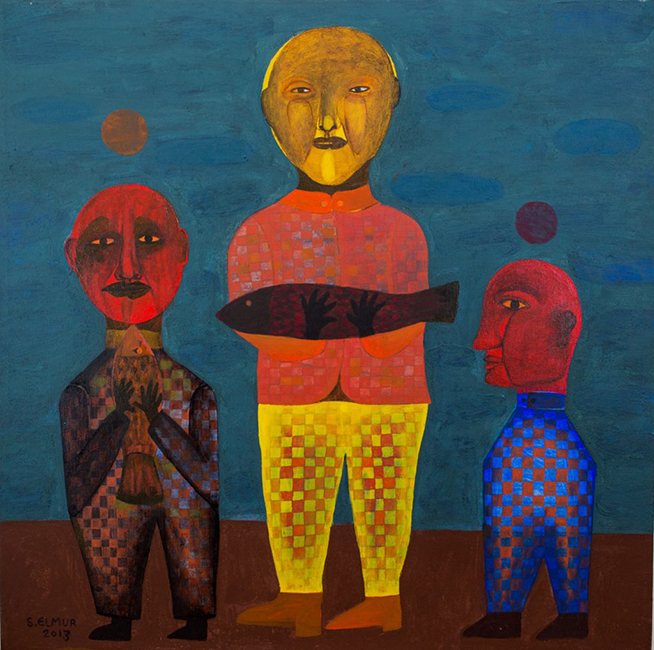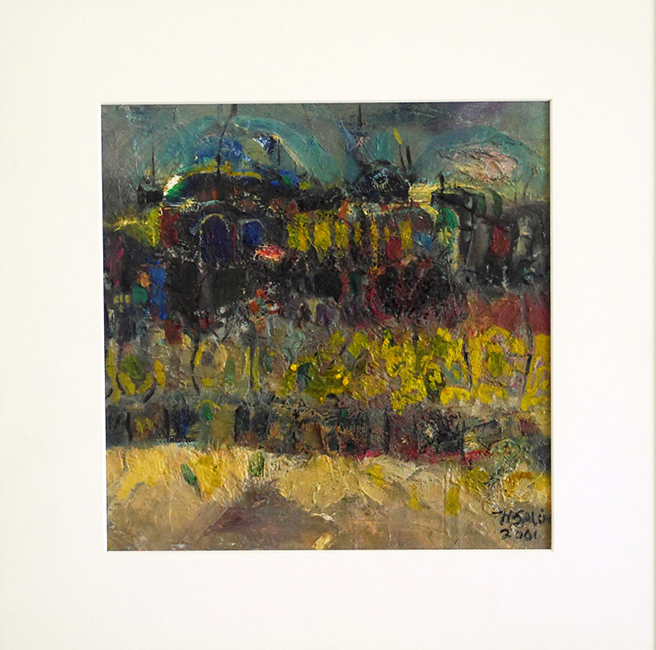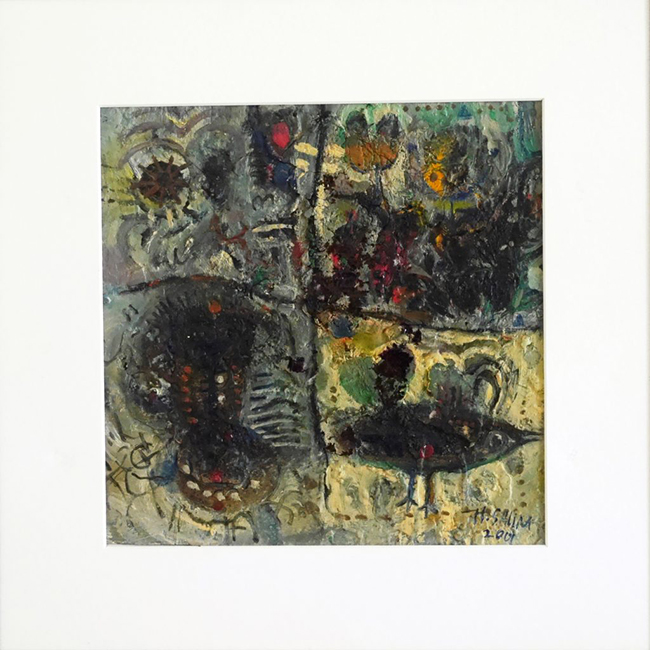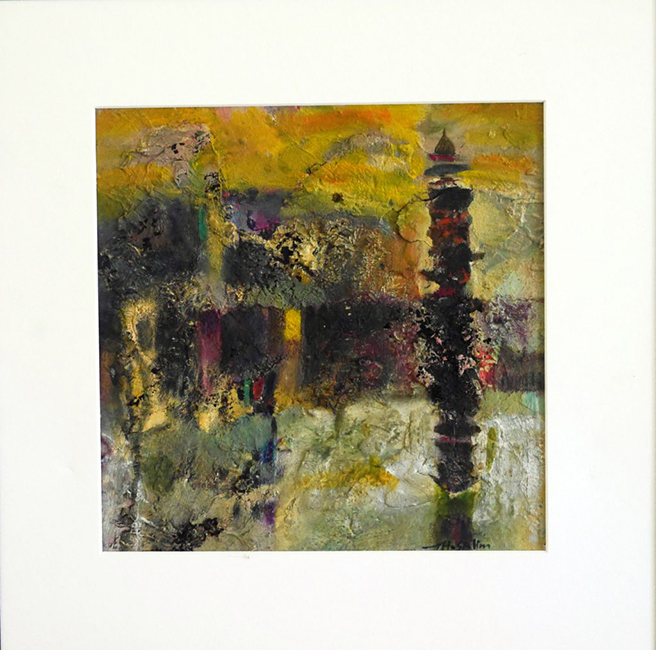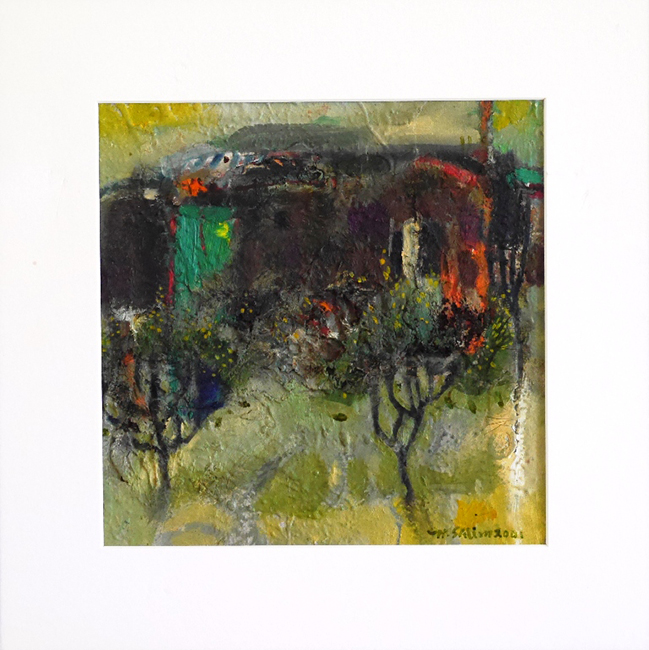A Sudanese Collection
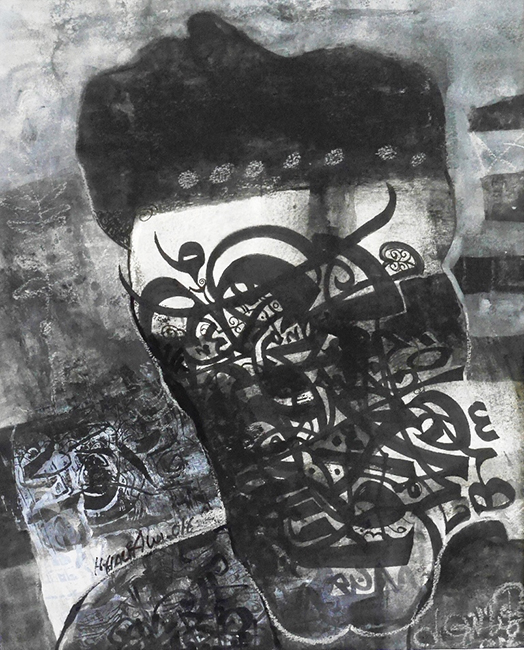
Red Hill Art Gallery presents a selection of artworks from Sudanese artists: Abushariaa Ahmed, Eltayeb Dawalbeit, Hassan Salim, Hussein Halfawi, Issam Hafiez, Noman Faris and Salah Elmur.
All these artists graduated from the College of Fine and Applied Art of the University of Khartoum in Sudan during the 1980's and 1990's.
The Khartoum School
The ‘Khartoum School’ was a modernist art movement created in 1960, that sought to develop a new visual vocabulary to reflect the distinctive identity of the newly independent nation, a synthesis of Western influences and traditions that capture Sudan’s diversity. It was formed by the artists Ahmed Shibrain, Kamala Ishag and Ibrahim El-Salahi.
The group was characterized by its use of primitive and Islamic imagery. One of its distinctive characteristics was the use of calligraphic writing, in which the artists would simplify Arabic script into abstract shapes. This aesthetic, together with Islamic and Nubian motifs, became a hallmark of the ‘Khartoum School’.
The group disbanded in 1975 after Kamala Ishag broke away to found the ‘Crystalist Group’ and Ibrahim El-Salahi was accused of anti-government activities and imprisoned, later going into self-imposed exile in the UK.
However their legacy remained aroused in the teaching syllabus of the current College of Fine and Applied Art of the University of Khartoum and has influenced coming artists’ generations.
Abushariaa Ahmed
born in 1966 in Omdurman, graduated in 1990. He left the Sudan in the mid-90s and spent some years in Kenya as an artist in residence at the Paa ya Paa Arts Centre in Nairobi. He later lived for a short period in Cologne, Germany, before settling in Kampala, Uganda, in 2000, where he worked as a freelance artist. After many years in the diaspora Abushariaa went recently back to Khartoum.
Abushariaa is a master in mixed-media techniques. His semi-abstract, colourful, artwork is still influenced by the ‘Khartoum School’ style, enriched with ornamental and patterned symbols of his Nubian culture.
Eltayeb Dawalbeit
was born in 1968 in Kosti and graduated in 1994. He moved in 2000 to Nairobi, where he has been living since as an artist and textile designer.
His earlier artwork still shows the trademarks of the ‘Khartoum School’, however, he found in his recent work his very own personal expression: the human face, fractured faces, scratched out from broken wood boards and doors and cupboard wings, symbolize a broken core of human mind and spirit.
Hassan Salim
Hassan graduated in the mid 1990. He now lives as a freelance artist in South Africa.
Hussein Halfawi
was born in 1968 New Halfa, Kassala State. He joined the School in 1988, however, he never received his graduation certificate, he was forced to leave the institution in 1991. He moved to Kenya in 1991. He has lived since then in Nairobi.
Halfawi’s artwork is still influenced by the ‘Khartoum School’ style, mixed media on paper creating multi-layered paintings and using calligraphic writing transforming Arabic scripts into abstract shapes.
Issam Hafiez
was born in 1959 in Zuma, Northern State. He graduated in 1982. He lives and works as an artist and graphic designer in Khartoum.
Shown in this exhibition is the ‘The Liberation of Women’, the female body in happy nudity – a rather unusual expression in the Muslim – Islamic culture.
Noman Faris
was born in Sudan in 1964 and graduated in 1993. He passed on in 2007.
Salah Elmur
was born in 1966 in a village on the western bank of the Blue Nile in Sudan.
He graduated in 1989 as a graphic designer. He left in the mid 1990’s the Sudan and settled for some years in Nairobi and is now living in Cairo, Egypt.
Salah Elmur initially represented the ‘Khartoum School’, classic style of painting, with semi-abstract, colourful, ornamental and symbolic water-coloured mixed media works. From 2000 onwards his style changed to large-scale, figurative-abstract acrylic paintings.

